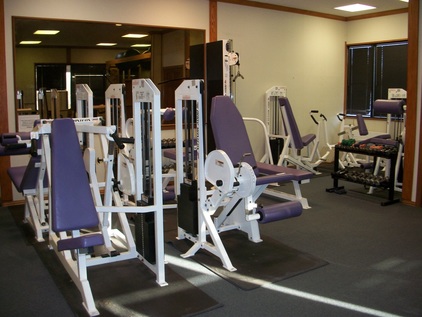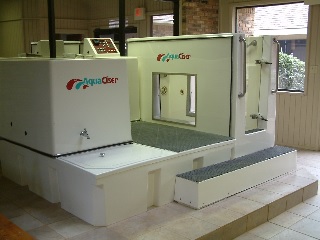|
A wide range of techniques, devices and machines are utilized to assist the physical therapist in the active rehabilitation of a patient’s injury. Passive modalities, such as electrical stimulation therapy (e-stem), galvanic stimulation, ultrasound, transcutaneous electrical nerve stimulation (TENS), cryotherapy and paraffin baths, are also available when needed. |
Aquatic TherapyNTPRC’s aquatic center consists of (1) a whirlpool, (2) an exercise pool with swim jets, and (3) an aquaciser underwater treadmill system. Water natural buoyancy allows a person to strengthen muscles groups with decreased joint stress, while hydrostatic pressure tends to decrease swelling and improve joint position awareness. Warm water also relaxes muscles and vasodilates blood vessels, increasing blood flow to injured areas.
|
Functional Capacity Evaluations
A functional capacity evaluation is conduct by NTPRC’s physical therapist. Measures of strength, endurance, and range of motion are taken in a comprehensive evaluation designed to accurately assess the functional abilities and capacity of a patient.
|
Cold Laser Therapy
NTPRC also utilizes Low-Level Laser Therapy (LLLT), commonly referred to as “cold laser therapy.” LLLT has a photobiostimulation effect on tissue, stimulating the immune, lymphatic, and vascular systems and assisting in cellular repair. LLLT may be useful in wound healing and a variety of musculoskeletal conditions, including carpal tunnel syndrome, fibromyalgia, osteoarthritis, rheumatoid arthritis and chronic pain syndrome.
|



